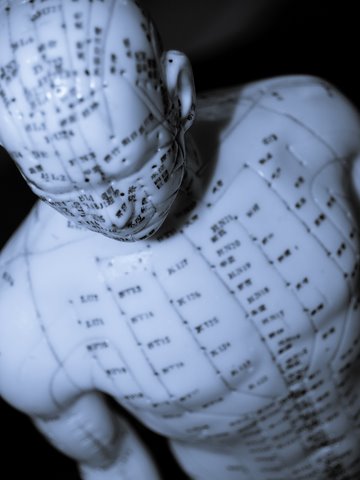This article is from SunSentinel.com
By Ronald Reimer M.D., Neurosurgery, Mayo Clinic, Jacksonville
December 31, 2008
December 31, 2008
Dear Mayo Clinic: What do you think of acupuncture as a treatment for various ailments? How does it work?
Acupuncture, which has been used and studied throughout the world for more than 4,000 years, can be utilized to rebalance the flow of energy (Qi) in the body and effectively treat many conditions. At Mayo Clinic, acupuncture has been used successfully for pain management, postoperative nausea, anxiety relief, drug addiction, insomnia and headaches, to name a few.
Acupuncture is administered by inserting up to a dozen or more tiny needles into very precise locations (points) determined by symptoms. The needle insertion points are based on a series of points along meridians or channels that interconnect throughout the body, each with a different function. There are 12 principal meridians within the body, containing almost 400 acupuncture points.
Patients rarely have any discomfort with needle insertion. Needles remain in place for 15 to 45 minutes. During a treatment, the acupuncturist may gently stimulate the needles manually, apply heat with a ceramic lamp at a safe distance, or attach low-frequency electrical stimulation. The goal is to improve energy flow in the body, thus relieving pain and other symptoms, allowing people to improve their quality of life.
For some conditions, one treatment provides rapid relief. Other situations, such as chronic pain management, may require a series of treatments. In some cases, symptom relief is not always immediate and may require a period of two to three days for the positive effects to be noted. This is in part related to delayed secretion of endorphins. While some patients and providers remain skeptical of its therapeutic value, acupuncture is becoming more mainstream in Western medicine as a stand-alone treatment or as one element of a comprehensive treatment plan.
As a practicing neurosurgeon, I can cite several examples of acupuncture’s beneficial effects. These stories from our patients illustrate the scope of acupuncture’s benefits.
Post-surgery nausea
Nausea and vomiting after surgery can be a serious side effect of anesthesia for some patients. It can slow recovery and require some patients to remain in the hospital for weeks on IV fluids. Potential complications of extended bed rest include increased risk of pneumonia and blood clots. One acupuncture treatment can abate the nausea.
A colleague of mine needed neck surgery and had a history of postoperative nausea that resulted in prolonged hospital stays. We performed acupuncture within an hour of surgery. At that point, she was already developing nausea. Following one treatment, she didn’t need anti-nausea medication, slept well and sailed through her recovery. She and her husband considered the benefit dramatic. We also have seen dramatic results in liver and heart transplant patients with relief of nausea and quicker recovery.
Tennis and golf elbow (epicondylitis)
Another patient, an avid tennis player, thought he was permanently sidelined because of elbow pain. Aggressive physical therapy and steroid injections hadn’t helped. With one acupuncture session, his pain was eliminated, and several days later he played in a doubles match — and won. Studies have shown that, for this type of pain, acupuncture can be more effective than steroid injections or physical therapy alone.
Cancer recovery
Another patient had difficulty bouncing back after surgery — an esophagus resection to treat cancer. Like many patients, he had problems eating, lost weight and wasn’t able to work or exercise. After he’d lost almost 50 pounds and nothing else helped, he tried a series of acupuncture treatments. He says the acupuncture gave him his life back. He has returned to work and more normal activities, has gained needed weight and works out regularly with a trainer.
Growing acceptance
Granted, these are anecdotes. Not everyone will experience similar results, nor might everyone even be a candidate for acupuncture. Acupuncture has an excellent safety profile, with negligible risk of infection or bleeding. It can safely be performed on patients who are on blood thinners, unlike many other pain management modalities. Patients should seek treatment by physicians who’ve received extensive training in the art and science of acupuncture.
*Please Note
The majority of acupuncturists are not M.D.’s but are highly qualified to perform acupuncture. Most Acupuncturists have obtained a A Master’s degree in Chinese Medicine from an accredited four year program and passed a National exam.
Overall, an ever-growing body of research confirms the benefits of acupuncture. One treatment can cost from $100 to $200, and most insurance companies do not cover acupuncture.Coverage is slowly becoming more common, as insurers see that acupuncture can help reduce health-care costs when fewer pain medications are needed and patients can be discharged more quickly from the hospital.
Send questions to medicaledge@mayo.edu or Medical Edge from Mayo Clinic, c/o TMS, 2225 Kenmore Ave., Suite 114, Buffalo, NY 14207. For more information, go to mayoclinic.org.


